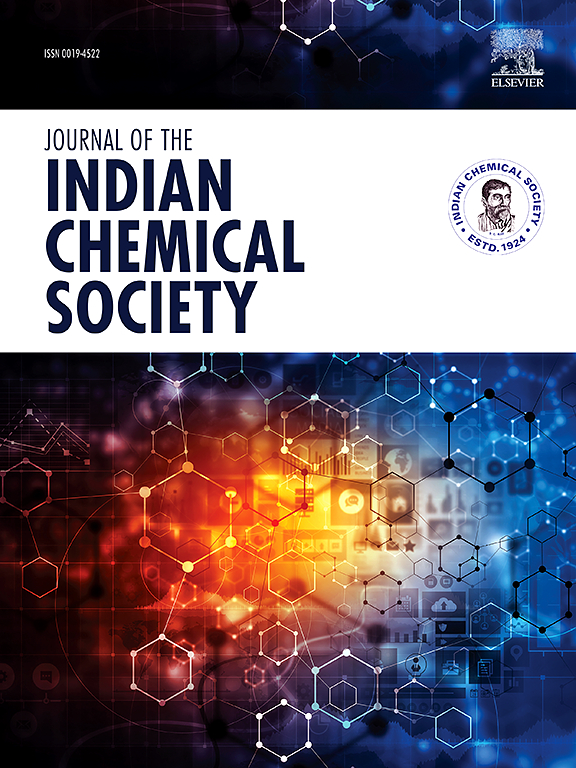SC-XRD investigation, DFT/TD-DFT, XRD/HSA-interaction, imine↔enol tautomerization and catecholase potential of new Zwitterionic pyran-2-one Schiff base ligand
IF 3.2
4区 化学
Q2 CHEMISTRY, MULTIDISCIPLINARY
引用次数: 0
Abstract
A novel chelate pyran-2-one derivative zwitterion Schiff base (ZSB) was synthesized with a significant yield. The ZSB ligand was synthesized by a combination in ethanol of 3-acetyl-4-hydroxy-6-methyl-2H-pyran-2-one and 5-amino-2-methoxyphenol at reflux. A comprehensive analysis of the ZSB ligand was performed using a range of physicochemical techniques, including (1H & 13C)-NMR, UV–vis, FT-IR and SC-XRD. The zwitterionic isomer in the solid-state was proved via SC-XRD analysis, which demonstrated the existence of H-bond intramolecular [O− … H–N+] interactions units together with E-conformation as kinetic favored isomer structure. Moreover, the electrostatic and interaction behavior in the desired ZSB ligand were further clarified by utilizing Hirschfield surface analysis (HSA) and completing the HOMO/LUMO/DOS studies. In addition, DFT and TD-DFT calculations were utilized to optimize the ZSB and get insights into its practical UV–vis behavior and optical properties. The imine↔enol tautomerization process was assessed via SC-XRD/1H NMR and estimated via DFT calculation. The work aimed to replicate the function of catecholase oxidation catalysis of 1,2-diol-benzene by examining its efficiency as an in situ ZSB/Cu(II) catalyst complex.
SC-XRD研究,DFT/TD-DFT, XRD/ hsa -相互作用,新型两性离子吡喃-2- 1席夫碱配体的亚↔烯醇异构化和儿茶酚酶电位
合成了一种新型螯合吡喃-2- 1衍生物两性离子希夫碱(ZSB),收率较高。以3-乙酰-4-羟基-6-甲基- 2h -吡喃-2-酮和5-氨基-2-甲氧基苯酚为原料,在乙醇中回流合成ZSB配体。使用一系列物理化学技术对ZSB配体进行了全面分析,包括(1H &;13C)-NMR, UV-vis, FT-IR和SC-XRD。通过SC-XRD分析证实了固态两性离子异构体的存在,证明了分子内存在氢键[O−…H-N +]相互作用单元和e构象为动力学有利的异构体结构。此外,利用Hirschfield表面分析(HSA)进一步阐明了ZSB配体的静电和相互作用行为,并完成了HOMO/LUMO/DOS研究。此外,利用DFT和TD-DFT计算对ZSB进行了优化,并深入了解了ZSB的实际紫外-可见行为和光学性能。用SC-XRD/1H NMR对亚胺↔烯醇异构化过程进行了评价,并用DFT计算对其进行了估计。这项工作旨在通过考察其作为原位ZSB/Cu(II)催化剂配合物的效率来复制儿茶酚酶氧化1,2-二醇苯的功能。
本文章由计算机程序翻译,如有差异,请以英文原文为准。
求助全文
约1分钟内获得全文
求助全文
来源期刊
CiteScore
3.50
自引率
7.70%
发文量
492
审稿时长
3-8 weeks
期刊介绍:
The Journal of the Indian Chemical Society publishes original, fundamental, theorical, experimental research work of highest quality in all areas of chemistry, biochemistry, medicinal chemistry, electrochemistry, agrochemistry, chemical engineering and technology, food chemistry, environmental chemistry, etc.

 求助内容:
求助内容: 应助结果提醒方式:
应助结果提醒方式:


